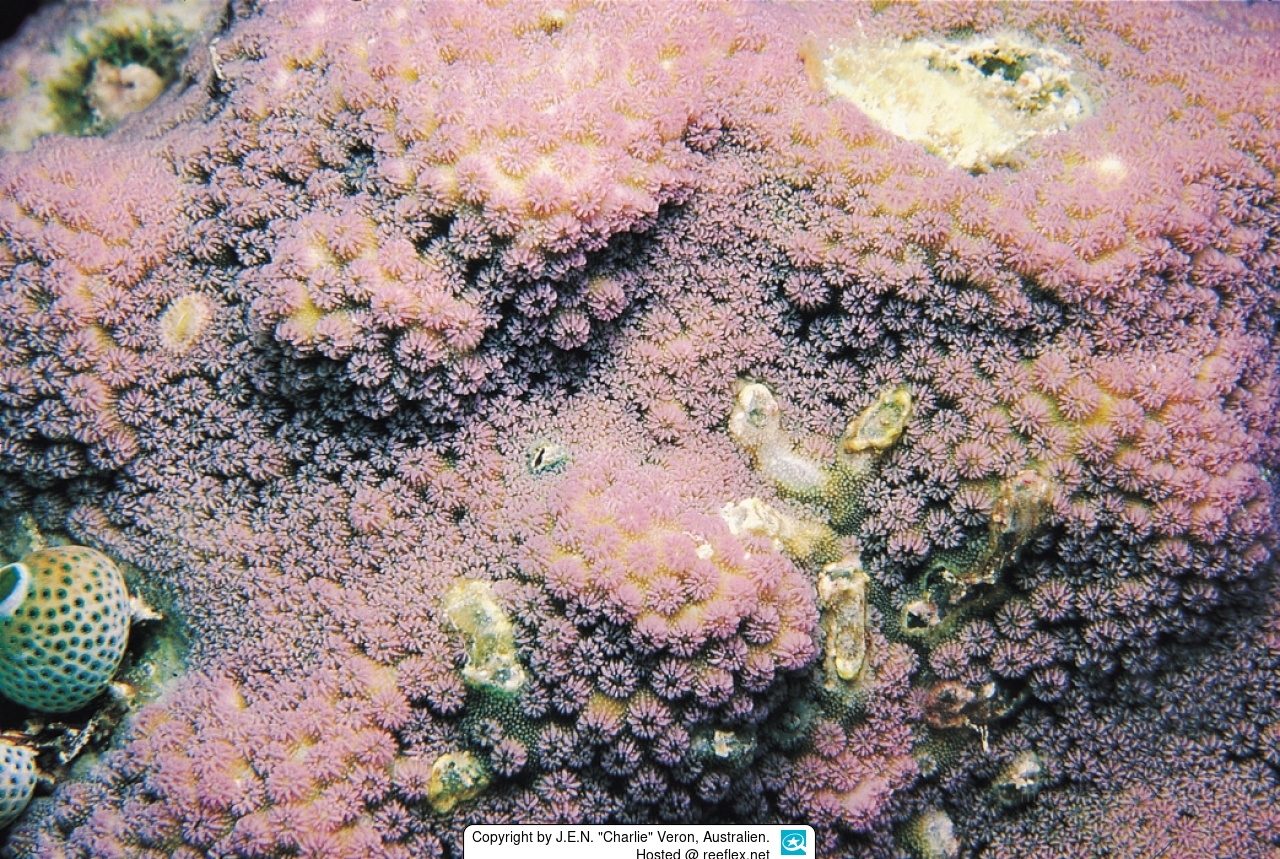Info
“From Veron, J.E.N. Corals of the World.”
Cyphastrea microphthalma
(Lamarck, 1816)
Characters: Colonies are massive, becoming thin encrusting plates where light levels are low. They commonly grow as mobile balls (coralliths). Corallites are tall and conical; compact in colonies exposed to strong light, widely spaced in encrusting colonies. They usually have 10 primary septa although this varies among corallites.
Colour: Brown, cream or green, sometimes other colours. Septa are commonly white.
Habitat: Most reef environments.
Source reference: Veron (2000). Taxonomic references: Chevalier (1975), Veron, Pichon and Wijsman-Best (1977), Wijsman-Best (1980). Additional identification guides: Veron (1986), Sheppard and Sheppard (1991), Nishihira and Veron (1995), Coles (1996), Carpenter et al. (1997).
Cyphastrea microphthalma
(Lamarck, 1816)
Characters: Colonies are massive, becoming thin encrusting plates where light levels are low. They commonly grow as mobile balls (coralliths). Corallites are tall and conical; compact in colonies exposed to strong light, widely spaced in encrusting colonies. They usually have 10 primary septa although this varies among corallites.
Colour: Brown, cream or green, sometimes other colours. Septa are commonly white.
Habitat: Most reef environments.
Source reference: Veron (2000). Taxonomic references: Chevalier (1975), Veron, Pichon and Wijsman-Best (1977), Wijsman-Best (1980). Additional identification guides: Veron (1986), Sheppard and Sheppard (1991), Nishihira and Veron (1995), Coles (1996), Carpenter et al. (1997).







 Dr. John Edward Norwood "Charlie" Veron, Australien
Dr. John Edward Norwood "Charlie" Veron, Australien















